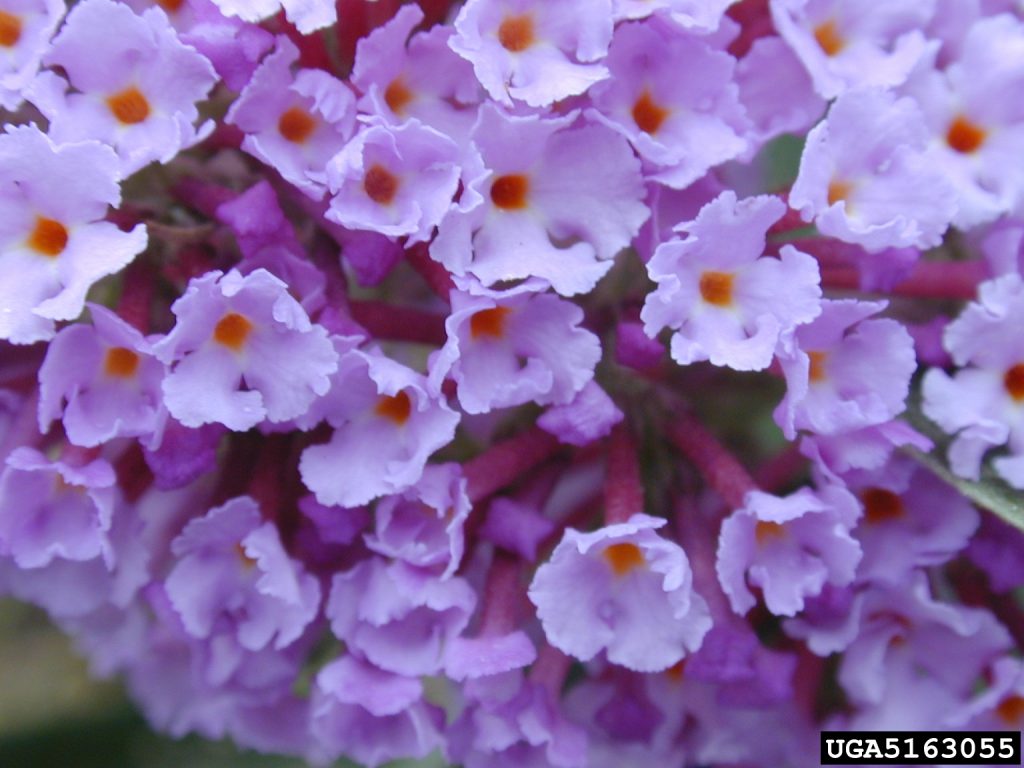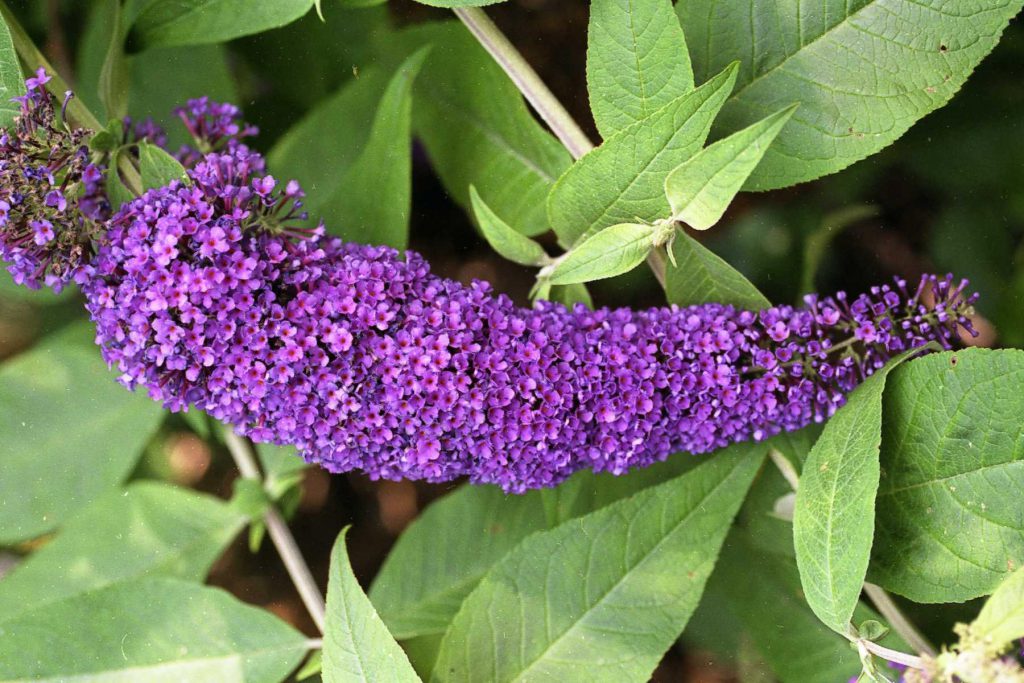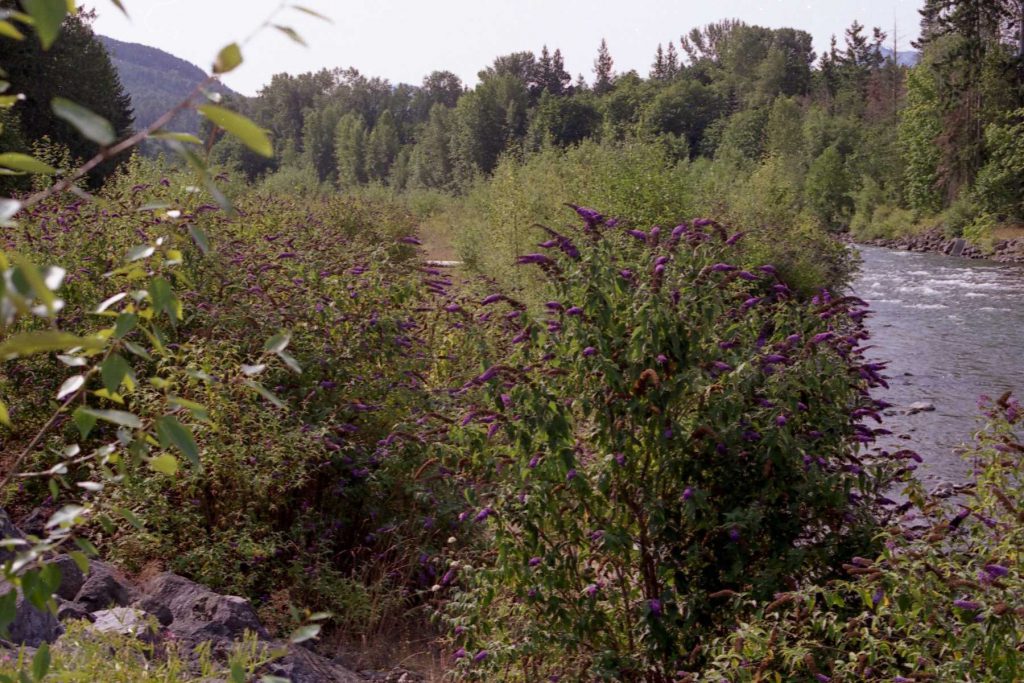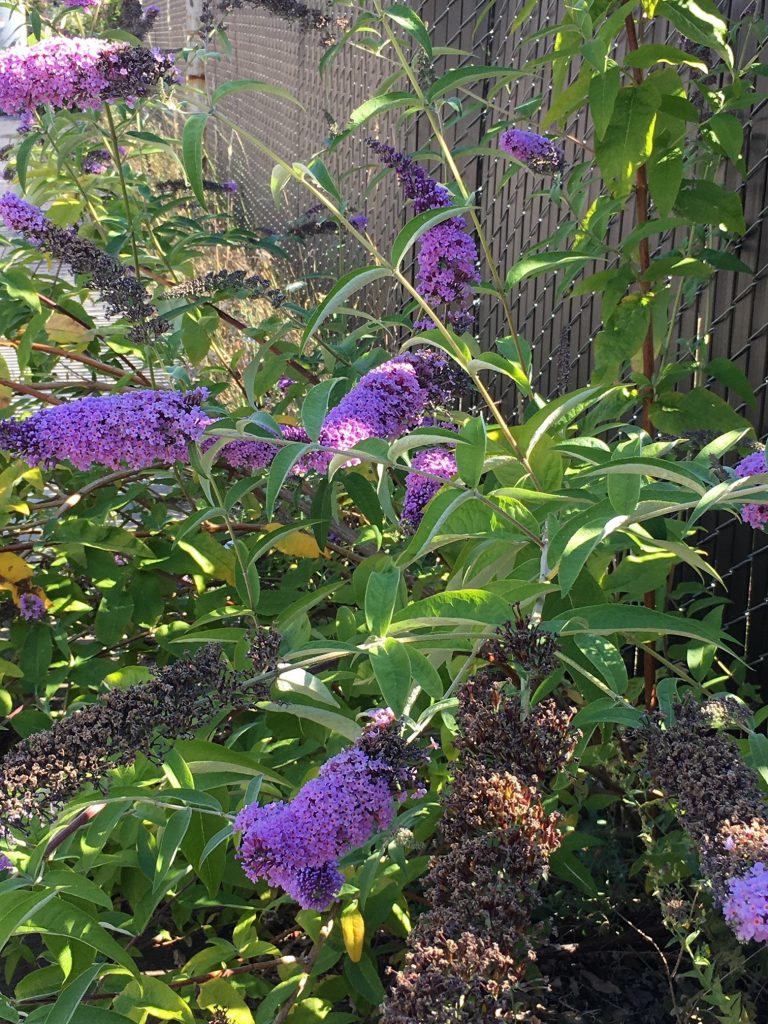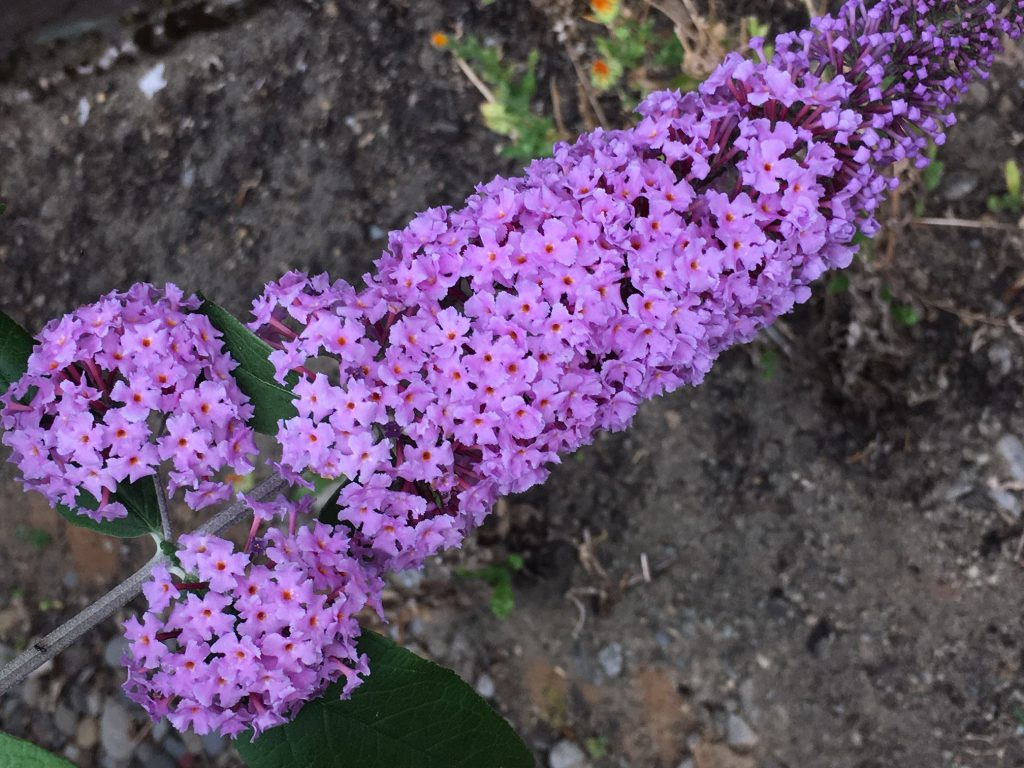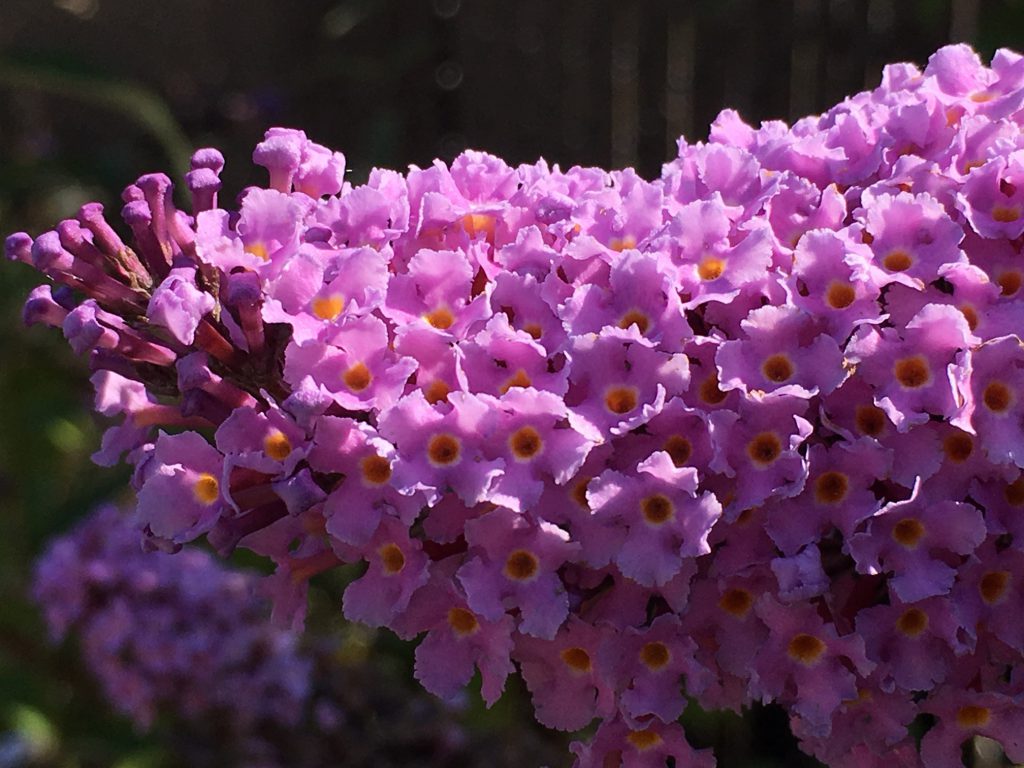Scientific name: Buddleia davidii
What Is It?
Butterfly bush (Buddleja davidii) is a woody shrub with purple flowers that grows back every year. It is a very popular ornamental plant, often found in gardens. It also is common along riverbanks and river gravel bars where it out-competes native plants and alters soil nutrients.
Is It Here Yet?
Yes. Escaped, invasive populations of butterfly bush are pervasive in western Washington, including Clallam, Clark, Cowlitz, King, Lewis, Skagit, Snohomish, Thurston, and Whatcom Counties.
Why Should I Care?
Butterfly bush forms dense, shrubby thickets that exclude all other plants and displace native vegetation such as willows. They can serve as pollination sources, reducing native plant pollination. Despite its name, the bush likely harms butterflies. Once established, it is difficult to remove because it re-sprouts very easily.
How Can We Stop It?
Replace butterfly bush growing in a garden with native plants, or at the least remove dead seed heads to prevent seed spread. The butterfly bush is listed as a Class B noxious weed in Washington, meaning it is designated for control in certain regions.
What Are Its Characteristics?
- It is a deciduous shrub with arching branches that can reach a height of 15 feet.
- The leaves and stems are typically hairy and are often green or blue-gray above and whitish on the underside.
- Leaf stalks are short and hairy, although the leaves sometimes are attached directly to the stem.
- Small, fragrant flowers are white to deep purple, with an orange-yellow inside.
- Flowers cluster together in groups that may be 4-10 inches long.
Additional Photographs
